13/05/2025 Market Watch

Markets Seek Direction After US-China Truce
Key Takeaways:
- Markets stabilise after initial reaction to US-China cooling-off period.
- Focus shifts to US budget and May CPI, which is expected to show little change.
- Dollar broadly weaker against G10, mixed against emerging markets.
- Asian equities mostly up, but China and Hong Kong lag.
- Gold and oil recover after volatile sessions.
Following yesterday’s sharp market movements, global capital markets are showing signs of consolidation. The 90-day “cooling-off” period between the US and China is being closely assessed by investors, but the initial euphoria has given way to a more measured tone. In the US, political attention is now turning toward budget negotiations, while May’s Consumer Price Index (CPI) release is in focus, with expectations pointing to minimal changes in inflation.
The US dollar has softened against most G10 currencies, with the Canadian dollar being the exception. Despite yesterday’s rally, there has been little follow-through in dollar buying, and the current pullback remains limited. Performance against emerging market currencies is mixed — most Asian currencies have weakened, but the Chinese yuan remains firm, along with certain central European currencies and the Mexican peso.
Asian equity markets generally posted gains, although Hong Kong and mainland Chinese shares listed there fell by about 2%, bucking the regional trend. In Europe, the Stoxx 600 has extended yesterday’s strong gains modestly, while US index futures have given back some ground in early trading. Bond markets are seeing mixed flows — European benchmark yields are slightly higher, while the 10-year US Treasury yield is modestly lower near 4.45%.
Gold has stabilised after recent volatility. Having tested the $3200 level, it rebounded to trade above $3250 in European trading hours. Oil prices have also found a foothold after dipping earlier today, with June WTI now trading around $62.40, recovering from lows near $61.65.
United States of America
Overview
After a sharp move yesterday, the US Dollar Index is now consolidating near the upper end of its previous range, approaching the 102.00 level. This area coincides with a significant Fibonacci retracement zone, indicating a pause in momentum. The broader context remains shaped by ongoing US-China trade dynamics. Beijing appears to have softened its stance by pausing retaliatory tariffs for 90 days, aligning with Washington’s 10% “universal tariff” and specific penalties for fentanyl-related exports.
Attention is now shifting to inflation data, with April’s CPI due today. Markets anticipate a moderate increase, with base effects likely keeping the year-over-year numbers steady. This release could offer further clarity on the Federal Reserve’s next steps, although expectations for the next rate move have already shifted toward September. In parallel, a key legal challenge to presidential tariff authority will be heard by the US Court on International Trade, raising questions about the scope of executive powers under the International Emergency Economic Powers Act (IEEPA).
Economic Drivers
- US-China trade tensions have eased temporarily with a 90-day pause on reciprocal tariffs.
- The US maintained its 10% universal tariff and a separate penalty for fentanyl-related imports.
- Markets are focused on inflation trends and future monetary policy direction.
- Legal scrutiny over the president’s authority to impose tariffs could have broader implications for trade policy.
Data and Events
- May 13, 2025: US April CPI release.
Price Action
- Dollar Index consolidating near 102.00 after a sharp move.
- Technical levels of interest include 102.10 (61.8% retracement), 102.60 (38.2% YTD retracement).
Key Points:
- Dollar stabilising after yesterday’s surge.
- Inflation data may influence timing of next Fed decision.
- Temporary easing in US-China tariff tension.
- Legal challenge could redefine presidential trade authority.
Australia
Overview
The Australian dollar came under pressure after being rejected from the $0.6460 level, briefly dipping below $0.6360 before rebounding. Despite the outside down day posted yesterday, there has been no continuation of selling pressure today. Instead, the currency recovered close to $0.6420, although resistance is expected around the $0.6435 zone. The near-term technical landscape suggests a cautious tone, with momentum indicators beginning to point lower and short-term moving averages crossing bearishly.
On the policy front, the futures market continues to price in a 25 basis point rate cut by the Reserve Bank of Australia at its upcoming meeting. However, expectations for the total extent of rate cuts this year have moderated. Market participants now anticipate roughly 83 basis points of easing, down from over 100 basis points forecasted just a week earlier. This shift reflects a recalibration of monetary policy expectations amid evolving macroeconomic conditions.
Economic Drivers
- Broad expectation for the RBA to cut rates by 25 basis points at the upcoming meeting.
- Market sentiment on Australian rate cuts has softened, with year-end expectations reduced from 106 bp to 83 bp.
- Shifts in monetary policy expectations are influencing broader currency sentiment.
Data and Events
No major economic releases are scheduled today.
Price Action
- Australian dollar rejected from $0.6460; support tested near $0.6360.
- Recovery stalled near $0.6420 with resistance seen around $0.6435.
- A break below $0.6350 would suggest stronger corrective pressure.
- Five-day moving average has crossed below the 20-day, with momentum turning lower.
Key Points:
- AUD held key support after outside down day.
- No follow-through selling seen today.
- RBA expected to cut rates, but outlook for easing has moderated.
- Technical signals point to near-term caution.
Canada
Overview
The Canadian dollar weakened sharply against the US dollar, which posted a bullish outside up day by breaking above last Friday’s range and closing higher. The greenback climbed toward CAD1.4020, briefly challenging its 200-day moving average and surpassing the 38.2% retracement of the April decline. Despite a modest intraday pullback to CAD1.3960, the US dollar remained firm, suggesting continued upward pressure. A move toward the 50% retracement level near CAD1.4085 remains within reach if bullish momentum persists.
The Canadian economic outlook was shaken by last week’s disappointing employment data. The unemployment rate rose to 6.9%, the highest since the pandemic, and manufacturing employment suffered a sharp drop of 31,000 jobs. These developments have prompted the market to reassess the likelihood of another rate cut. While expectations for a June rate cut remain elevated, the odds have decreased slightly from 67% to around 62% as markets digest the impact of the labour market deterioration.
Economic Drivers
- The Canadian unemployment rate climbed to 6.9%, marking a post-pandemic high.
- Manufacturing employment recorded a significant decline of 31,000 jobs.
- Market expectations for a rate cut in June remain high but have eased slightly following the weak employment data.
Data and Events
No major economic releases are scheduled today.
Price Action
- US dollar posted a bullish outside up day, breaching CAD1.4005.
- Brief retreat to CAD1.3960 before rebounding; key support held.
- Resistance near CAD1.4020 coincides with the 200-day moving average.
- Further upside potential toward CAD1.4085, the 50% retracement of the April move.
Key Points:
- Canadian dollar weakened after poor labour market data.
- Unemployment hit a new post-pandemic high at 6.9%.
- Rate cut expectations for June have moderated slightly.
- USD/CAD remains technically supported above CAD1.3960.
China
Overview
The US dollar has continued to retreat against the Chinese yuan, slipping below CNH7.20 and briefly breaching CNH7.18 — levels not seen since November of last year. This decline follows a peak near CNH7.2530 just before the weekend and reflects a broader adjustment in currency sentiment. Market attention has also turned to the People's Bank of China (PBOC), which has been gradually allowing more variation in the daily dollar reference rate. The latest fixing at CNY7.1991 represents the largest one-day change since early April, suggesting a subtle increase in the central bank’s tolerance for currency flexibility.
From a policy standpoint, China’s engagement in weekend talks yielded few concessions. However, Beijing did reiterate its commitment to combat fentanyl exports and lifted its restriction on Boeing aircraft, both seen as symbolic moves rather than material policy shifts. These steps may indicate a slight willingness to ease diplomatic tensions without making significant economic compromises. Meanwhile, the yuan’s recent resilience suggests that currency policy remains tightly managed, albeit with marginally increased flexibility.
Economic Drivers
- The PBOC adjusted the daily dollar reference rate more aggressively, hinting at slightly increased currency flexibility.
- The yuan reached its strongest levels since November, reflecting continued central bank influence.
- China reaffirmed its pledge to limit fentanyl exports.
- Beijing lifted its ban on Boeing aircraft as part of weekend discussions.
Data and Events
No major economic releases are scheduled today.
Price Action
- US dollar fell below CNH7.20 and briefly under CNH7.18.
- Last week's low near CNH7.1845 was taken out in early trading.
- Dollar peaked at CNH7.2530 before the recent decline.
- The reference rate set at CNY7.1991 marks the largest one-day change since April 7.
Key Points:
- Yuan strengthened to levels not seen since November.
- PBOC allowed the most flexible reference rate move in over a month.
- China reiterated its fentanyl stance and ended Boeing aircraft restrictions.
- Currency policy remains controlled, but with slightly more daily variation.
Europe
Overview
The euro has entered a consolidation phase after losing momentum near the $1.1125 level. It has retraced nearly 61.8% of its advance from late March highs, while the $1.1025 area represents a key retracement level of this year’s broader rally. Trading volumes have remained light, and upside movement has stalled. Market sentiment toward European Central Bank (ECB) policy is beginning to shift. While a June rate cut is still widely expected, the probability has eased slightly, and overall expectations for rate cuts this year have declined.
On the data front, Germany’s ZEW survey delivered a mixed signal. After a steep drop in April, expectations rebounded sharply in May, suggesting renewed optimism. However, the current conditions component weakened for the first time this year, pointing to lingering near-term challenges. These developments highlight the delicate balance the ECB must navigate as it considers the pace and scale of monetary easing amid mixed economic signals.
Economic Drivers
- Market odds of a June ECB rate cut fell to around 85%, down from 93% before the weekend.
- The swaps market is now pricing in about 45 basis points of easing this year, down from 62 basis points.
- Germany’s ZEW expectations index rebounded strongly in May, indicating improved sentiment.
- The current conditions component of the ZEW survey weakened slightly, showing persistent economic strain.
Data and Events
- May 13, 2025: Germany May ZEW Economic Sentiment Index.
Price Action
- Euro retraced nearly 61.8% of its rally from late March highs (~$1.1055).
- The $1.1025 area marks a key 38.2% retracement of the 2025 advance.
- Price stalled after testing $1.1125, with consolidation in quiet turnover.
Key Points:
- Euro consolidating after fading near $1.1125.
- Market slightly dialled back ECB rate cut expectations.
- German ZEW expectations bounced back; current assessment softened.
- Price action suggests downside risk toward $1.0950 remains.
Japan
Overview
The Japanese yen remains under pressure as the US dollar tested highs near JPY148.65 before easing back to JPY147.65. In early European trading, the pair is hovering just below the JPY148 level. Market participants are now eyeing the JPY149.40–JPY149.70 zone, which contains key technical markers including the 50% retracement of this year’s decline and the 200-day moving average.
Looking ahead, the main economic focus this week is the preliminary estimate for Q1 GDP. Forecasts suggest a mild contraction, reinforcing concerns about Japan’s fragile recovery. While the upcoming Producer Price Index (PPI) is unlikely to influence markets significantly, shifting expectations in money markets suggest a reassessment of the monetary policy outlook. The swaps market now prices in around 18 basis points of tightening for the year, doubling the amount anticipated just a week earlier. This indicates a subtle but noticeable shift in investor sentiment regarding potential Bank of Japan policy moves.
Economic Drivers
- Market expectations have adjusted to price in 18 basis points of tightening for 2025, up from 9 basis points a week ago.
- The Japanese economy is expected to post a mild contraction in Q1, according to preliminary GDP forecasts.
- Sentiment around Japan’s monetary policy outlook has shifted slightly as tightening expectations increase.
Data and Events
- May 14, 2025: Japan April Producer Price Index (PPI).
- May 16, 2025: Japan Q1 Preliminary Gross Domestic Product (GDP).
Price Action
- Dollar peaked near JPY148.65, then eased to JPY147.65.
- Currently trading just under JPY148 in European hours.
- Key resistance lies in the JPY149.40–JPY149.70 area, which includes the 50% retracement of this year’s decline and the 200-day moving average.
Key Points:
- Yen remains weak, with USD/JPY trading near JPY148.
- Q1 GDP expected to show a slight contraction.
- Market now pricing in more policy tightening by BOJ.
- Focus shifting toward upcoming GDP release later this week.
© 2025 SKONE Enterprise (003319453-V). All rights reserved.
The content on this site is for informational purposes only and does not constitute financial advice.


